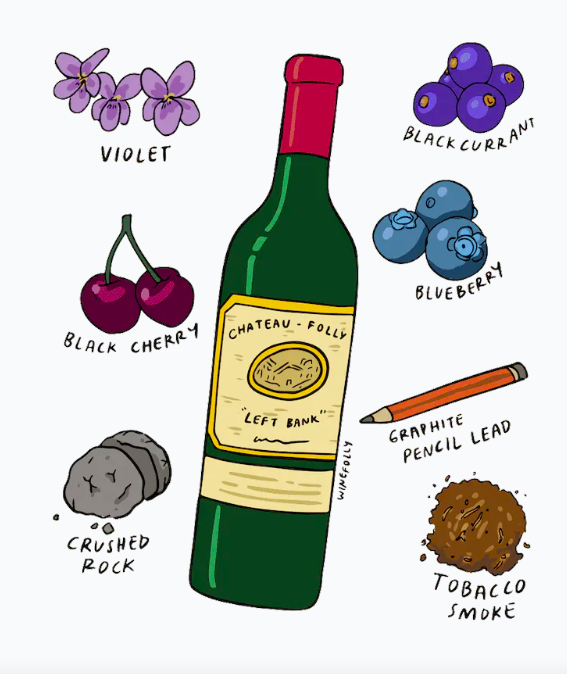What Are The 5 Characteristics Of Wine?
By understanding the 5 basics characteristics below, you’ll have a better chance of choosing great wines.

It’s important to understand the basic characteristics of wine, to learn how to taste wine. Learning to identify wine characteristics helps to identify what you like about a wine.
Very accomplished oenophiles are able to determine a wine’s grape and region from a single taste – and indeed sometimes just a smell – but you needn’t have such a skilled palette to determine your own unique preferences. A simple understanding of wine’s five fundamental characteristics will set you in good stead for a lifetime of tasting enjoyment.
Here Are The 5 Characteristics Of Wine:
1. Sweetness
The sweetness of wine comes from the residual sugar, this is the left-over sweetness when not all the grape has been fermented into the alcohol. It is one of the most distinguishable characteristics of a bottle, as it is a flavor we’re all familiar with. Whilst everyone’s sensitivity to sweetness is different, we all experience this flavor immediately, making it one of the most basic characteristics of wine.
Sweetness is also the main factor contributing to the calorie count of a glass. A very sweet wine would have a lot more calories than a bone-dry one – sorry to anyone with a sweet tooth!
2. Acidity
The acidity plays a big part in how tart or sour a wine is. Unripe grapes have high acid levels, but that drops as they ripen. Grapes that are grown in cooler climates often contain higher acidity because there’s less warmth and sunshine available to increase the grapes’ sugar and pH levels.
Most acid in wine comes from grapes, these acids include, tartaric, malic, and citric. When it comes to pH level, wine usually sits anywhere between 2.5 and 4.5pH on the scale.
3. Tannin
Tannins are natural compounds existing inside a grape’s skin, seed, and stem. Tannin AKA polyphenol is released from each grape as they soak in their juices, immediately after the grape’s been pressed. Because white wines ferment without grape skins, ‘Tannin’ is mostly used when describing red wines. However, Tannin can also be absorbed from oak barrels, so it can be found in white wines, but with much less intensity.
When looking out for tannin in your wine, you’ll want to focus on the texture of your tongue. A high level of tannin removes proteins from the tongue, drying your palette. If you were wanting to describe the wine you were sipping to be high in tannin, you’d call it ‘tannic’. Tannic wines work well to cleanse the palette of rich, fatty meat and cheese.
4. Alcohol
Don’t worry, we hadn’t forgotten one of the key characteristics of wine, alcohol! The alcohol in the wine we drink is a chemical called ethanol. When producing wine, fruit (usually grapes) are put through a process called fermentation to create alcohol. The time taken to ferment plays a key role in the final alcohol percentage.
While also contributing to the wine’s texture and viscosity, alcohol also plays a part when it comes to the aroma, with it carrying the wine’s scent from the surface to your nose. Remember to drink responsibly though, premature taxis are never ideal!
5. Body
Finally, the Body. The sweetness, acidity, tannin, and alcohol are the four factors working together to make up the wine’s body. When describing the body of a wine, we talk about them being either light, full, or medium-bodied. Light-bodied or ‘lighter’ wines generally hold more acidity, less alcohol, tannin, and sweetness. Whereas, full-bodied, or ‘bolder’ wines have the opposite properties. They are less acidic, higher in alcohol, are more tannic and sweeter.
We have an awesome wine list at Pinot's Palette. Check it out: https://menu...aperville-bev
Share Join us for some wine and art! | Book a party with us!

